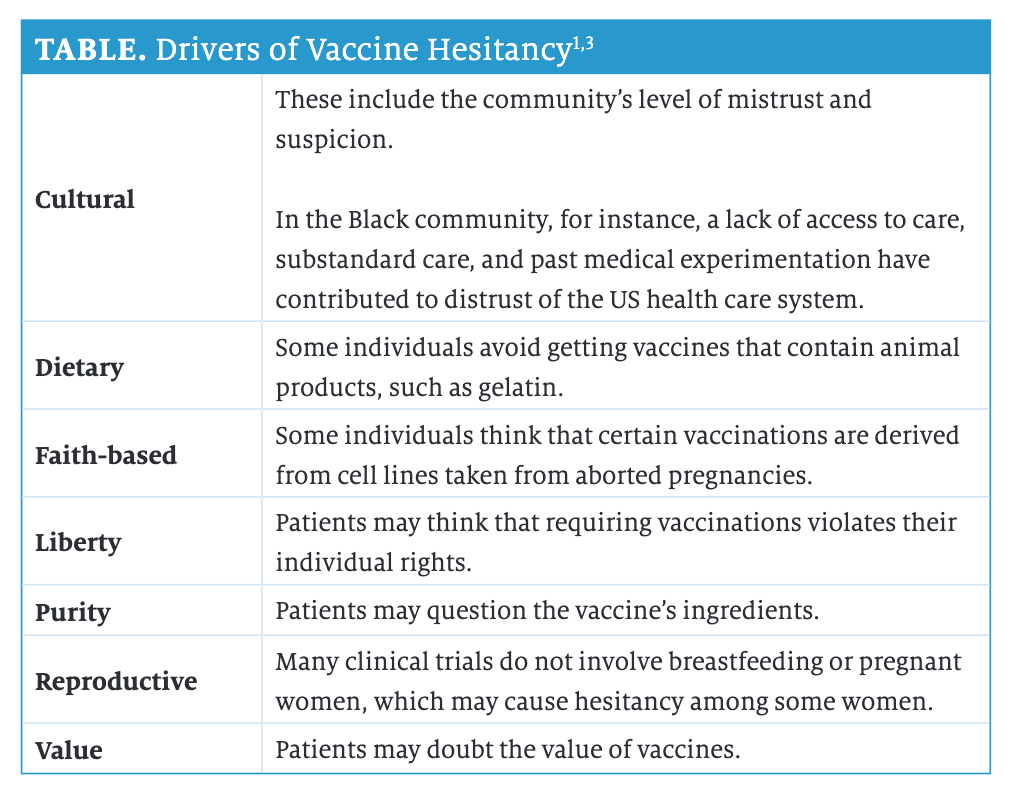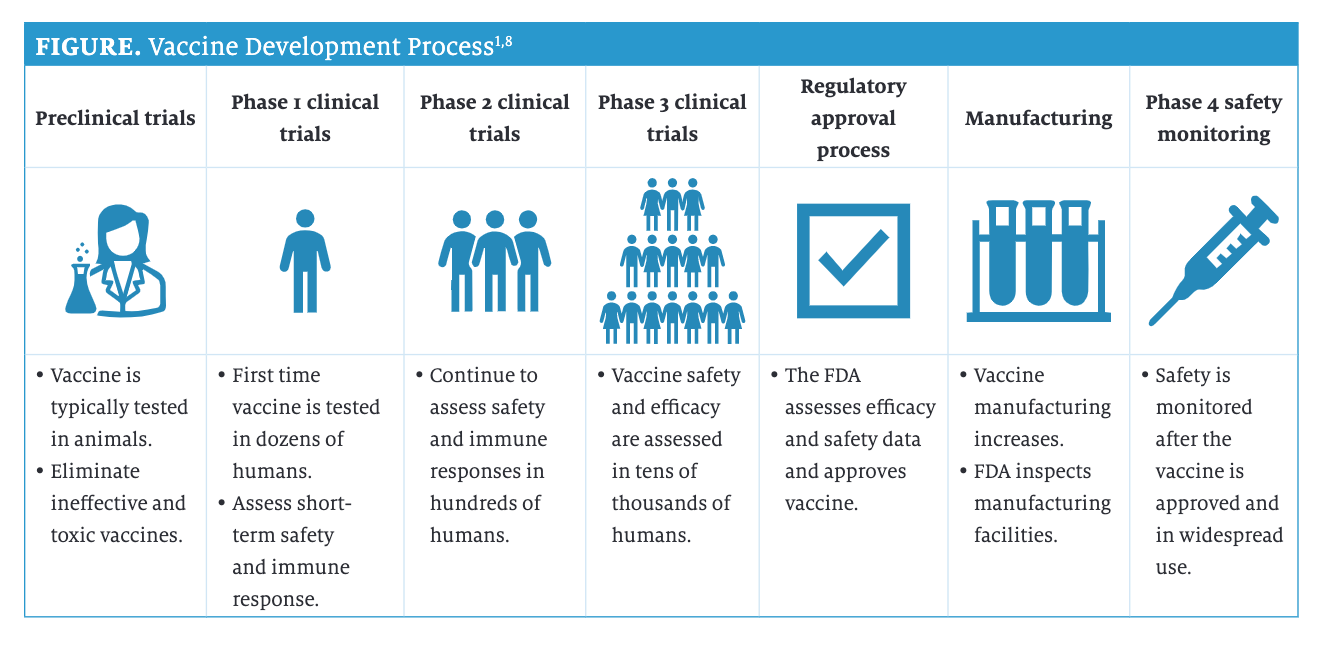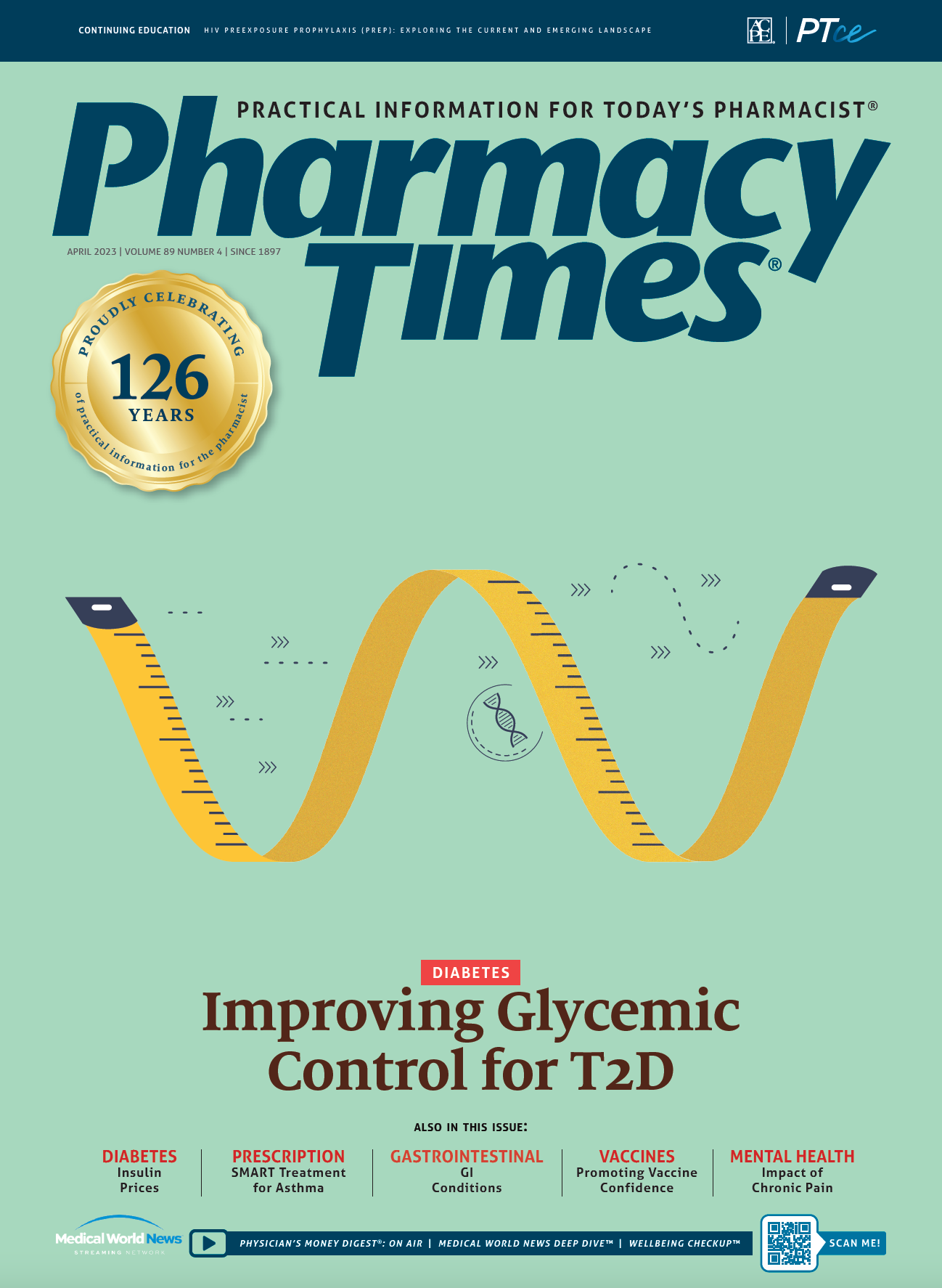Vaccine confidence allows patients to make informed decisions, increasing vaccination rates and decreasing the risk of illness, hospitalization, and death.1 Vaccine confidence is about family, patient, and provider trust in recommended vaccines. It also promotes trust in providers who administer vaccines and the process that leads to vaccine development, authorization or licensure, and manufacturing.1
Pharmacy Times: Call for Papers
Pharmacy Times Oncology EditionTM and Pharmacy Times Health-System EditionTM are seeking to expand our current coverage offerings to include peer reviewed research on clinical topics and treatment of different disease states.
The publications are seeking to focus on a wide range of therapeutic categories in the oncology and health-system pharmacy space to educate readers and translate innovative clinical discoveries into improved health outcomes for patients. This new focus on clinical research seeks to accelerate adaptation of new therapeutics, techniques, and technologies from the publication’s pages to the clinical setting.
The clinical manuscripts sought will examine different treatments for and management of the different disease states and pharmacologic interventions. Of particular interest are papers that highlight the role of the pharmacist within the overall health care team and provide insight into the impact pharmacists have on patient outcomes. These submissions will be peer-reviewed and published in upcoming editions of Pharmacy Times Oncology Edition and Pharmacy Times Health-System Edition.
Some clinical topics of interest include:
- Transitions of Care
- Immuno-oncology
- Hematology
- Breast Cancer
- Lung Cancer
- Leukemia/Lymphoma
- Ovarian Cancer
- Melanoma
- Head and Neck Cancer
- Antimicrobial Stewardship
- Cardiovascular Disease
- Renal Disease
- Metabolic Disease
- 340B
- Biosimilar Adoption
- Immunizations
- HIV and Pre-exposure Prophylaxis
To send in research paper submissions or if you have any questions, please email Davy James (djames@pharmacytimes.com) or Alana Hippensteele (ahippensteele@mjhlifesciences.com).
Know the Facts
Reviewing CDC recommendations and literature is a great way of staying up to date. Pharmacists can educate patients about different vaccines’ common adverse effects, their effectiveness, and who should receive each vaccination. By contrast, it is just as important to address misinformation. Misconceptions about diseases and their transmission, trust in science, and vaccine safety are major causes of vaccine hesitancy.2 Answering patients’ questions accurately and quickly builds vaccine confidence.
Build Community Confidence
Transparency, or providing information to patients regarding vaccine benefits and risks, is crucial to improving a community’s vaccine confidence. Pharmacists should discuss the health benefits for individuals, their families, and the greater community. Vaccinations have cost benefits, too. Vaccine-preventable diseases can be expensive if doctor visits, hospitalizations, and procedures are necessary.
When pharmacists answer questions, they should respect patient fears, preferences, and values and only share information from credible, reliable sources.2
Pharmacists can connect with their communities through faith-based organizations, local health departments, schools, and town halls to address concerns and provide information.1 Considering community-specific barriers can help promote vaccine confidence.
Vaccine hesitancy has numerous drivers (Table1,3). Individuals have different feelings and thoughts about vaccines’ perceived benefits and risks. Social factors, such as provider recommendations and rumors, can drive or inhibit vaccination. Vaccine availability, convenience, and cost all affect hesitancy.1
Several types of vaccines train the immune system to fight bacteria and viruses. These are:
- Inactivated vaccines (eg, hepatitis A, influenza, and rabies) use chemicals to kill the virus, so it is unable to multiply. These vaccines cannot cause disease.4 However, inactivated vaccines usually do not provide the long-lasting protection live vaccines do, and they often require booster shots.4,5
- Live-attenuated vaccines (eg, measles-mumps-rubella and varicella) use a weakened, or attenuated, form of the virus that provides immunity.5 To stimulate an immune response, these vaccines must replicate in the vaccinated individual.4 Attenuated vaccines can rarely cause disease.
- Messenger RNA (mRNA) vaccines deliver short segments of mRNA that correspond to a viral protein, usually a small piece found on the outside of the virus. Introducing this short mRNA segment causes the body to make the corresponding viral protein. The immune system recognizes these proteins as intruders and produces antibodies.6 The COVID-19 vaccines are the only FDA-approved mRNA vaccines.
- Subunit, recombinant, polysaccharide, and conjugate vaccines (eg, hepatitis B, meningococcal, and shingles) contain pieces of the pathogens that they protect against.7 These pieces produce an immune response that targets key components of the virus.5
The toxins the bacteria produce cause some diseases. In toxoid vaccines, chemists use chemicals, heat, or other methods to inactivate the toxin used in the vaccine.4,7 Tdap (tetanus, diphtheria, pertussis) is an example of a toxoid vaccine.
Vaccine Development, Approval
Vaccine development is an extensive, phased process (Figure1,8) that traditionally takes between 5 and 10 years.1 Development of the COVID-19 vaccines happened extraordinarily quickly because the government and pharmaceutical companies prioritized their development.9
Conclusion
Promoting vaccine confidence creates healthy communities and a healthy world. Understanding the reasons for vaccine hesitation lets pharmacists best help different populations of individuals in their communities. Building strong, trusting relationships with patients is a fundamental component of promoting vaccine confidence.
References
1. Vaccine answers with a personal touch. APhA Vaccine Confident. Accessed January 9, 2023. https://vaccineconfident.pharmacist.com/
2. Badur S, Ota M, Öztürk S, Adegbola R, Dutta A. Vaccine confidence: the keys to restoring trust. Hum Vaccin Immunother. 2020;16(5):1007-1017. doi:10.1080/21645515.2020.1740559
3. What is vaccine confidence? CDC. February 7, 2022. Accessed January 9, 2023. https://www.cdc.gov/vaccines/covid-19/vaccinate-with-confidence/building-trust.html
5. Wodi AP, Morelli V. Principles of vaccination. CDC. August 2021. Accessed January 9, 2023. https://www.cdc.gov/vaccines/pubs/pinkbook/downloads/privac.pdf
4. Vaccine types. US Department of Health & Human Services. December 22, 2022. Accessed January 9, 2023. https://www.hhs.gov/immunization/basics/types/index.html
6. What are mRNA vaccines and how do they work? MedlinePlus. Updated November 21, 2022. Accessed January 10, 2023. https://medlineplus.gov/genetics/understanding/therapy/mrnavaccines/
7. Different types of vaccines. The College of Physicians of Philadelphia. Accessed January 11, 2023. https://historyofvaccines.org/vaccines-101/what-do-vaccines-do/different-types-vaccines
8. Vaccine research & development. Johns Hopkins University & Medicine Coronavirus Resource Center. Accessed January 11, 2023. https://coronavirus.jhu.edu/vaccines/timeline
9. Brookes P, Helwig B. Here's why development of a vaccine takes so long. The Heritage Foundation. April 28, 2020. Accessed January 11, 2023. https://www.heritage.org/public-health/commentary/heres-why-development-vaccine-takes-so-long
About the Author
Kirsten Werner is a 2023 PharmD candidate at the University of Connecticut School of Pharmacyin Storrs.









